Starting onion seeds indoors is simple and rewarding. It allows you to control the environment and ensure healthy growth.
Now we talk about How to Start Onion Seeds Indoors. Onion seeds thrive when given the right conditions early on. Indoor planting offers a head start before moving them outside. It’s a practical approach, especially for those eager to cultivate their own produce. With the right techniques, you can nurture strong seedlings that will flourish in your garden later.
Indoor seed starting not only extends the growing season but also provides a chance to experiment with different onion varieties. Whether you’re a seasoned gardener or a beginner, this method can lead to a successful onion harvest. Dive into the world of indoor gardening and discover how you can grow onions from seeds with confidence.
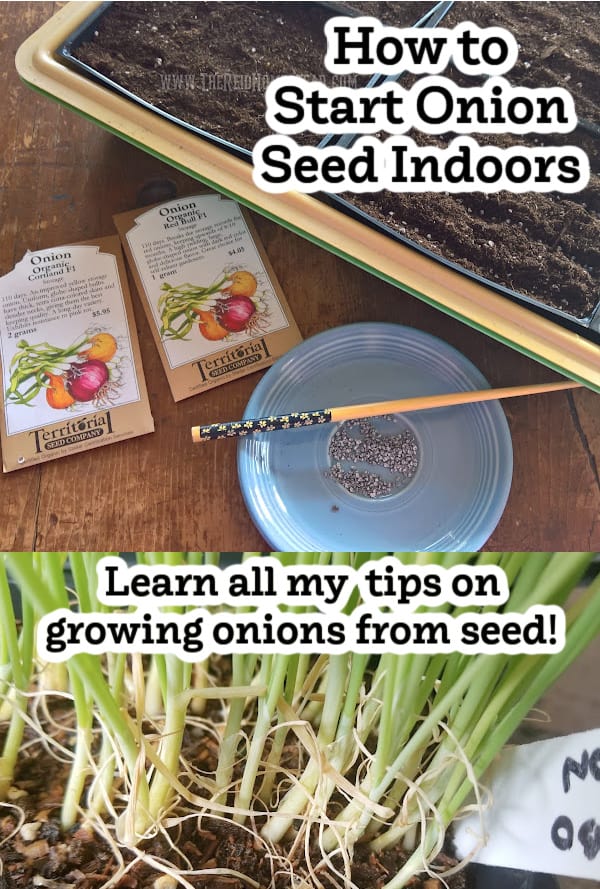
Choosing Onion Varieties
Starting onion seeds indoors can give you a head start on the growing season. Choosing the right onion varieties is crucial for a successful harvest. Different types of onions suit various growing conditions, including indoor environments. Let’s explore the types of onions and the best varieties for indoor growing.
Types Of Onions
Onions come in various types, each with unique characteristics. Understanding these types helps you choose the best for your indoor garden.
- Short-Day Onions: These require about 10-12 hours of daylight. Ideal for southern regions.
- Intermediate-Day Onions: Need 12-14 hours of daylight. Suitable for central regions.
- Long-Day Onions: Require 14-16 hours of daylight. Best for northern regions.
Each type of onion has different varieties that thrive in specific conditions. For indoor gardening, short-day and intermediate-day onions are often the best choices. They adapt well to the controlled light indoors.
Here’s a quick overview of the types:
| Type | Daylight Hours | Best Regions |
|---|---|---|
| Short-Day | 10-12 hours | Southern |
| Intermediate-Day | 12-14 hours | Central |
| Long-Day | 14-16 hours | Northern |
Best Varieties For Indoors
Choosing the best varieties for indoor growing ensures a healthy and productive onion crop. Here are some top picks:
- Crystal Wax: A short-day variety, perfect for indoor growing. Produces small, white onions.
- Red Burgundy: An intermediate-day onion, known for its sweet flavor. Ideal for salads and cooking.
- White Lisbon: A versatile variety that grows well indoors. Great for green onions or scallions.
When learning how to start onion seeds indoors, these varieties adapt well to limited light conditions. They also mature quickly, making them suitable for indoor environments.
Using proper techniques on how to start seeds indoors without grow lights can further enhance your success. Ensure to provide adequate water and nutrients. This helps mimic outdoor conditions for your indoor onion garden.
For those also interested in how early to start tomato seeds indoors or how to start herb seeds indoors, similar principles apply. Choose the right varieties and create a conducive environment.
Table of Contents
Gathering Supplies
Starting onion seeds indoors can be a rewarding way to get a jumpstart on the growing season. To ensure success, gathering the right supplies is essential. This includes choosing the best seed trays and containers, as well as the right soil and nutrients. Here’s a detailed guide on what you need.
Seed Trays And Containers
Choosing the right seed trays and containers is crucial for growing healthy onion seedlings. Seed trays are a popular choice because they are designed to hold multiple seedlings in a small space. Look for trays with individual cells to keep the roots from tangling.
Here are some options:
- Plastic seed trays: Durable and reusable.
- Biodegradable pots: Eco-friendly and can be planted directly in the soil.
- Recycled containers: Egg cartons or yogurt cups can be used as a budget-friendly alternative.
Ensure that all containers have drainage holes to prevent waterlogging. Overwatering can lead to root rot and other issues.
Here’s a simple table to compare different containers:
| Container Type | Advantages | Disadvantages |
|---|---|---|
| Plastic Seed Trays | Reusable, durable | Not eco-friendly |
| Biodegradable Pots | Eco-friendly, transplantable | Can degrade too quickly |
| Recycled Containers | Cost-effective, reusable | May lack durability |
Choosing the right container is the first step in understanding how to start onion seeds indoors and how to start seeds indoors without grow lights.
Soil And Nutrients
The quality of soil and nutrients significantly impacts the growth of your onion seedlings. Use a seed starting mix that is light, well-draining, and sterile. Avoid garden soil as it can contain pests and diseases.
Here’s what to look for in a good seed starting mix:
- Light texture: Ensures good root growth.
- Well-draining: Prevents waterlogging and root rot.
- Sterile: Reduces the risk of disease.
Adding nutrients is also important. Onion seedlings need balanced nutrients to grow strong. Use a water-soluble fertilizer that is high in phosphorus to encourage root development.
Consider this simple fertilizing schedule:
- Week 1: Use a diluted fertilizer solution.
- Week 3: Increase the concentration slightly.
- Week 5: Continue with regular feeding every two weeks.
Proper soil and nutrients are key to knowing how to start tomato seeds indoors, how to start onions from seed indoors, and even how to start herb seeds indoors. By following these guidelines, your seedlings will be healthy and ready for transplanting.
Planting Seeds
Starting onion seeds indoors is a great way to get a head start on your gardening season. By planting seeds indoors, you can ensure your onions have a strong beginning, leading to a healthier and more bountiful harvest. Knowing the right techniques for planting seeds can make all the difference in your success.
Seed Depth And Spacing
When learning how to start onion seeds indoors, understanding the correct seed depth and spacing is crucial. Planting seeds at the right depth ensures proper germination and growth. Here’s what you need to know:
- Seed Depth: Onion seeds should be planted about 1/4 inch deep. This depth is ideal for the seeds to access necessary nutrients and moisture while preventing them from drying out.
- Spacing: Space your seeds about 1 inch apart. This gives each seedling enough room to grow without competing for resources.
Creating a planting grid can help maintain consistent spacing. Use the table below as a guide:
| Row | Seed Spacing (inches) |
|---|---|
| 1 | 1 |
| 2 | 1 |
| 3 | 1 |
For best results, use seed trays or small pots. Fill them with seed-starting mix, which is lighter and drains better than regular soil. Gently press the seeds into the soil and cover them lightly. Remember, proper seed depth and spacing are key to successful germination and growth.

Watering Techniques
Watering techniques are important for how to start seeds indoors without grow lights. Proper watering keeps the soil moist and supports healthy root development.
Consider these tips:
- Initial Watering: After planting, water the soil gently but thoroughly. This ensures the seeds are well-hydrated from the start.
- Consistent Moisture: Keep the soil consistently moist, not soggy. Overwatering can lead to damping-off, a fungal disease that kills seedlings. Underwatering can cause seeds to dry out and fail to germinate.
- Watering Method: Use a spray bottle or a watering can with a fine nozzle to avoid displacing the seeds. Watering from the bottom by placing the seed trays in a shallow water container can also be effective.
Monitoring soil moisture is critical. Check the soil daily to ensure it remains damp. If the top inch of the soil feels dry, it’s time to water. Proper watering techniques are essential for how to start onion seeds indoors successfully.
Understanding these techniques will help you grow strong, healthy onion seedlings. Whether you are learning how early to start tomato seeds indoors or how to start herb seeds indoors, the principles of seed depth, spacing, and watering are universal. Follow these guidelines, and you’ll be on your way to a thriving indoor garden.

Creating Ideal Conditions
Starting onion seeds indoors can be an exciting and rewarding experience. For optimal growth, it’s crucial to create ideal conditions. This involves ensuring the proper light requirements and temperature control. By focusing on these factors, you can ensure healthy seedlings ready for transplanting. Below, we’ll explore the essential aspects of creating the best environment for your onion seeds.
Light Requirements
Light is vital for the growth of onion seedlings. When considering how to start onion seeds indoors, providing adequate light is crucial. Onion seedlings need at least 12-14 hours of light each day.
Here are some tips to ensure your seedlings get enough light:
- Place seedlings near a south-facing window.
- Use fluorescent lights if natural light is insufficient.
- Position lights 2-3 inches above the seedlings.
- Adjust the height of lights as seedlings grow.
Using grow lights can simplify the process. But if you’re wondering how to start seeds indoors without grow lights, natural light can work just as well.
Consider the following table for light options:
| Light Source | Duration | Tips |
|---|---|---|
| Natural Light | 12-14 hours | South-facing window |
| Fluorescent Light | 12-14 hours | 2-3 inches above seedlings |
Ensuring consistent light helps in the strong growth of seedlings. This is a key step in how to start onions from seed indoors.
Temperature Control
Maintaining the right temperature is essential for healthy onion seedlings. The ideal temperature range for germinating seeds is between 65-75°F (18-24°C). This range ensures proper sprouting and growth.
Consider these tips to maintain the right temperature:
- Keep the room temperature consistent.
- Avoid placing seed trays near drafts or heat sources.
- Use a heating mat to maintain soil warmth.
- Monitor the temperature with a thermometer.
Temperature control is also important for other plants. For example, knowing how early to start tomato seeds indoors involves similar temperature considerations.
Here’s a quick guide on temperature requirements:
| Stage | Temperature | Tips |
|---|---|---|
| Germination | 65-75°F (18-24°C) | Use a heating mat |
| Seedling Growth | 60-70°F (15-21°C) | Avoid drafts |
Maintaining the right temperature is crucial. It helps in how to start herb seeds indoors and ensures strong and healthy seedlings.
By focusing on proper light and temperature conditions, you can successfully start onion seeds indoors and enjoy a bountiful harvest.
Caring For Seedlings
Starting onion seeds indoors can be a rewarding experience. To ensure your seedlings grow healthy and strong, proper care is crucial. Caring for seedlings involves maintaining a consistent watering schedule and providing adequate nutrients through fertilization. Let’s explore these essential steps in detail.
Watering Schedule
Watering onion seedlings is a delicate task. Too much or too little water can harm their growth. Here’s how to start onion seeds indoors with the right watering schedule:
- Initial Watering: After sowing the seeds, lightly mist the soil to keep it moist. Avoid soaking it.
- Daily Check: Check the soil moisture daily. The top layer should remain damp, not dry or soggy.
- Watering Technique: Use a spray bottle for gentle watering. Pouring water directly can displace seeds.
- Drainage: Ensure pots have proper drainage holes. Excess water should drain out to prevent root rot.
Maintaining the right balance of moisture is key. Here’s a simple table to guide you:
| Stage | Watering Frequency | Notes |
|---|---|---|
| Seed Germination | Daily | Light misting |
| Early Seedling | Every 2-3 days | Ensure soil remains damp |
| Established Seedlings | Weekly | Water thoroughly, allow excess to drain |
Following this schedule helps prevent overwatering and underwatering. It’s essential to adjust based on your environment and soil type.
Fertilization Tips
Nutrient-rich soil is vital for strong seedlings. Knowing how to start onion seeds indoors includes understanding fertilization:
- Initial Fertilization: Use a seed starting mix with light nutrients. Avoid heavy fertilizers initially.
- First Feeding: Once seedlings have true leaves, start feeding them. Use a diluted liquid fertilizer.
- Regular Feeding: Feed seedlings every 2 weeks. Choose a balanced fertilizer like 10-10-10.
- Organic Options: Fish emulsion or seaweed extracts provide gentle nourishment without chemical overload.
Here’s a quick reference table for fertilization:
| Stage | Type of Fertilizer | Frequency |
|---|---|---|
| Initial Stage | Seed starting mix | None |
| True Leaves | Diluted liquid fertilizer | Every 2 weeks |
| Established Seedlings | Balanced fertilizer (10-10-10) | Every 2 weeks |
| Organic Option | Fish emulsion/seaweed extract | Every 2 weeks |
Fertilizing onion seedlings ensures they get the nutrients needed for robust growth. Remember to avoid over-fertilizing, which can damage young plants.
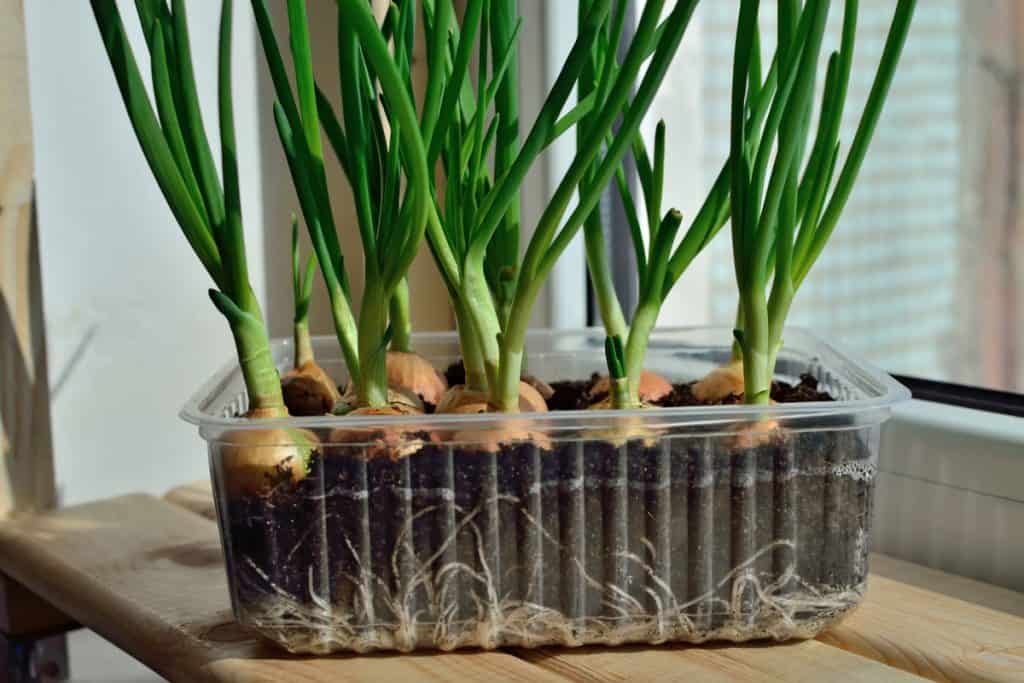
Transplanting Outdoors
Starting onion seeds indoors is a rewarding way to get a head start on your garden. Once your seedlings have grown strong, it’s time to transplant them outdoors. This process ensures your onions have the best chance to thrive and produce a bountiful harvest.
Timing For Transplanting
Knowing the right time to transplant your onion seedlings is crucial. Here are some key points to consider:
- Temperature: Onions prefer cooler weather. Transplant when temperatures range between 50°F and 75°F.
- Frost-Free Date: Transplant your seedlings 4-6 weeks before the last expected frost date in your area. Onions can tolerate light frost.
- Seedling Age: Your seedlings should be at least 6 inches tall with 3-4 leaves before transplanting.
A table can help you determine the ideal transplanting time based on your region:
| Region | Last Frost Date | Transplanting Time |
|---|---|---|
| Northeast | Mid-May | Early April |
| Midwest | Late April | Mid March |
| South | Early April | Late February |
| West | Early May | Late March |
Transplanting at the right time sets the stage for strong growth and a healthy harvest.
Acclimating Seedlings
Acclimating, or “hardening off,” your seedlings is a vital step. This process helps your indoor-grown plants adjust to outdoor conditions gradually. Follow these steps:
- Start Slowly: Begin by placing seedlings outdoors in a shaded spot for 2-3 hours. Gradually increase the time by 1-2 hours each day.
- Increase Sun Exposure: After a few days, start exposing seedlings to direct sunlight. Increase sunlight exposure gradually to avoid sunburn.
- Monitor Weather: Keep an eye on the weather. Bring seedlings indoors if temperatures drop below 45°F or if strong winds and heavy rain are forecasted.
Here’s a simple checklist to help you acclimate your seedlings effectively:
- Day 1-3: 2-3 hours in shade
- Day 4-6: 4-5 hours in partial sun
- Day 7-9: 6-7 hours in direct sunlight
- Day 10: Full day in the sun
Acclimating your seedlings properly reduces transplant shock and helps them settle into their new environment. This process is essential for anyone learning how to start onion seeds indoors or how to start seeds indoors without grow lights. By following these steps, you ensure your onions transition smoothly from indoor seedlings to thriving outdoor plants.
Common Challenges
Starting onion seeds indoors can be a rewarding experience. However, there are some common challenges you might face. Understanding these challenges can help you address them effectively and ensure a healthy start for your onion seedlings.
Pest Management
Pests can be a significant issue when learning how to start onion seeds indoors. Here are some common pests and how to manage them:
- Fungus Gnats: These tiny insects are attracted to moist soil. To prevent them, allow the soil surface to dry out between waterings. Sticky traps can help catch adult gnats.
- Aphids: Aphids can suck the sap from young onion seedlings. Use insecticidal soap or neem oil to control aphid populations. Inspect plants regularly.
- Spider Mites: These pests thrive in dry conditions and can cause yellowing of leaves. Increase humidity around the plants and use miticides if necessary.
Additionally, keeping your growing area clean is crucial. Remove debris and fallen leaves to minimize pest habitats. Proper ventilation can also reduce the risk of pest infestations.
| Pest | Signs | Management |
|---|---|---|
| Fungus Gnats | Small flies around soil | Dry soil surface, sticky traps |
| Aphids | Sticky residue, curled leaves | Insecticidal soap, neem oil |
| Spider Mites | Yellowing leaves, webbing | Increase humidity, miticides |
Disease Prevention
Disease prevention is crucial when learning how to start onions from seed indoors. Here are some common diseases and preventive measures:
- Damping-Off: This fungal disease affects seedlings, causing them to collapse. Avoid overwatering and ensure good air circulation. Use sterilized soil and containers.
- Downy Mildew: Characterized by yellow spots on leaves and white growth on the undersides. Maintain low humidity and avoid overhead watering. Remove infected plants immediately.
- Botrytis Blight: This disease causes gray mold on leaves and stems. Keep the growing area clean and dry. Remove any affected plants to prevent spread.
Proper sanitation is essential. Always use clean tools and sterilized containers. Rotate crops to prevent soil-borne diseases. Regularly inspect plants and remove any diseased parts.
| Disease | Signs | Prevention |
|---|---|---|
| Damping-Off | Seedlings collapsing | Good air circulation, avoid overwatering |
| Downy Mildew | Yellow spots, white growth | Low humidity, remove infected plants |
| Botrytis Blight | Gray mold | Clean growing area, remove affected plants |
Understanding pest management and disease prevention is essential for anyone learning how to start herb seeds indoors, how early to start tomato seeds indoors, or how to start seeds indoors without grow lights. These practices ensure healthy and robust seedlings.
Frequently Asked Questions
How Do You Germinate Onion Seeds Indoors?
Place onion seeds in seed trays filled with moist soil. Cover lightly with soil. Keep trays warm and under grow lights. Water regularly. Transplant seedlings after they reach 3 inches.
Should I Soak Onion Seeds Before Planting?
Yes, soaking onion seeds before planting can help improve germination rates. Soak seeds in warm water for 12-24 hours. This softens the seed coat and encourages quicker sprouting. Ensure seeds are properly dried before planting to prevent rotting.
Does It Take 2 Years To Grow Onions From Seed?
No, onions typically take 3 to 4 months to grow from seed. They can be harvested in one growing season.
Can You Germinate Onion Seeds In A Paper Towel?
Yes, you can germinate onion seeds in a paper towel. Moisten the towel, place seeds inside, and keep it warm.
What Supplies Do I Need To Start Onion Seeds Indoors?
You need onion seeds, seed trays, soil, water, and light.
When Should I Start Onion Seeds Indoors?
Start onion seeds 10-12 weeks before the last frost.
How Deep Should I Plant Onion Seeds?
Plant onion seeds 1/4 inch deep in the soil.
Conclusion
Starting onion seeds indoors is simple and rewarding. Follow the steps carefully. Choose quality seeds and good soil. Provide the right light and temperature. Water them regularly, but don’t overwater. Watch them sprout and grow strong. Soon, you’ll have healthy seedlings ready for transplanting.
These efforts will lead to a bountiful harvest. Enjoy fresh onions from your garden. Happy planting!



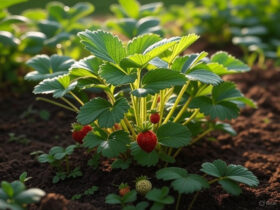



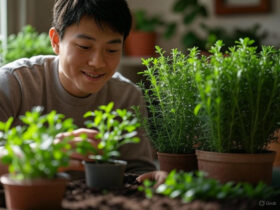
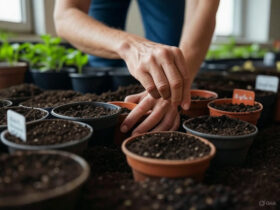
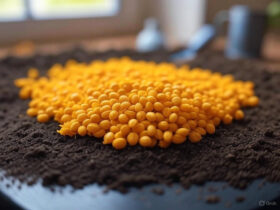

Leave a Reply